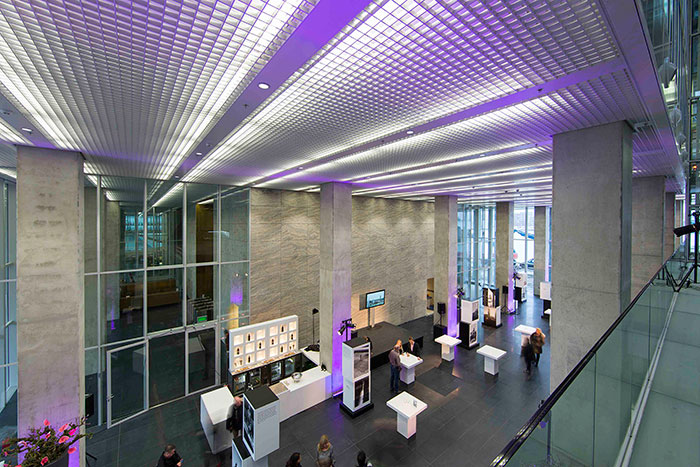New Ceiling Enables Buildings to Handle GCC’s Harsh Climate
 Other News
Other News Subscribe to newsletter
Subscribe to newsletter
| 6 Jul 2014 |
Dutch firm Hunter Douglas has launched a new ceiling that can safely handlethe GCC’s harsh climatewhilepromoting sustainable building design.
Sustainable building is booming in the Middle East, and is set to grow from USD 17.9 billion in 2012 to USD 23 billion by 2016, according to Green Middle East. The UAE is the region’s leader in sustainable design, hosting more than two-thirds of the GCC’s 1,236 LEED-certified buildings, driven by Dubai’s Green Building codes and Abu Dhabi’s Estimada initiative.
Unlocking the potential for Middle East developers and architects to design stunning and sustainable buildings, Hunter Douglas has developed a unique ceiling that resists corrosion, handles wind velocities of up to 150 km/hour, and can last for 50 years without inspection.

Hunter Douglas has successfullyinstalledthe2,500 square meter ground floor ceiling for De Rotterdam, The Netherlands’ largest multifunctional building, designed by award-winning firm OMA. The ceiling stretches from outside to inside, and is separated by a glass façade.
Kees van Casteren, Associate-in-Charge, OMA, said: “We wanted the building’s exterior to cross over into its interior as seamlessly as possible. It was not a system readily available on the market. Hunter Douglas took up the challenge to create a ceiling that matched our ideas.”
Hunter Douglas developed a storm-proof construction mounted above the ceiling panels, gave the aluminium exterior ceiling a corrosion-resistant coating, and produced reports on strength and wind load to ensure the ceiling will last for at least 50 years without inspection.
Terry Woudenberg, Project Advisor, Hunter Douglas, said, “The building is situated on the banks of the Meuse River, which means it will face heavy winds, moisture, and corrosion factors. We applied aluminium grids with a corrosion-resistant coating and anchored the ceiling with a more stable back construction, making the ceiling storm-proof.”
To meet strict lighting and acoustic requirementsfor the interior ceiling, Hunter Douglas produced theceiling with two layers.The top layer’s reflective panels hide lighting and ventilation systems, while the lower layer’s grid ceiling has perforated panels that absorb sound and minimize reverberation. In between are fluorescent lamp holders, with light bouncing off the reflective surface and spreading inside the building.




